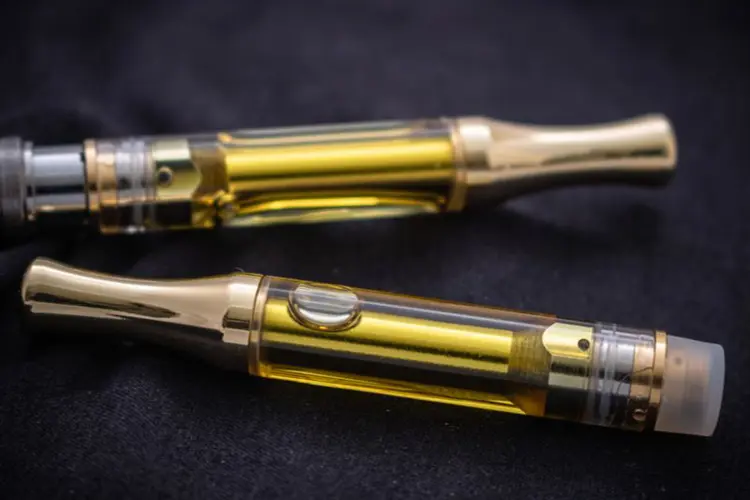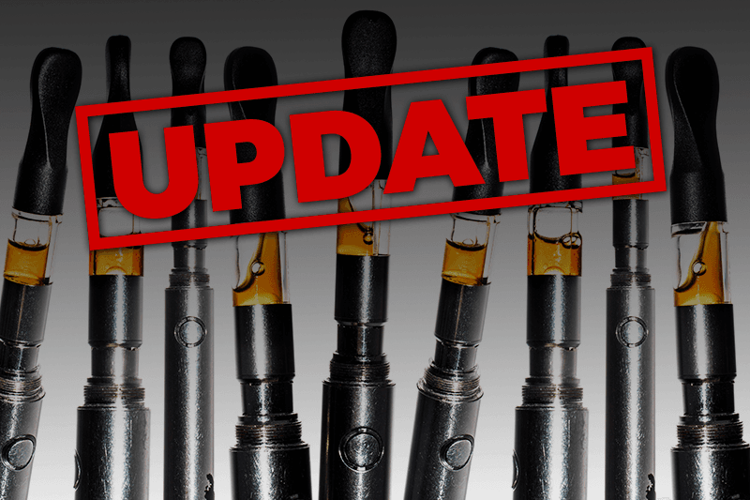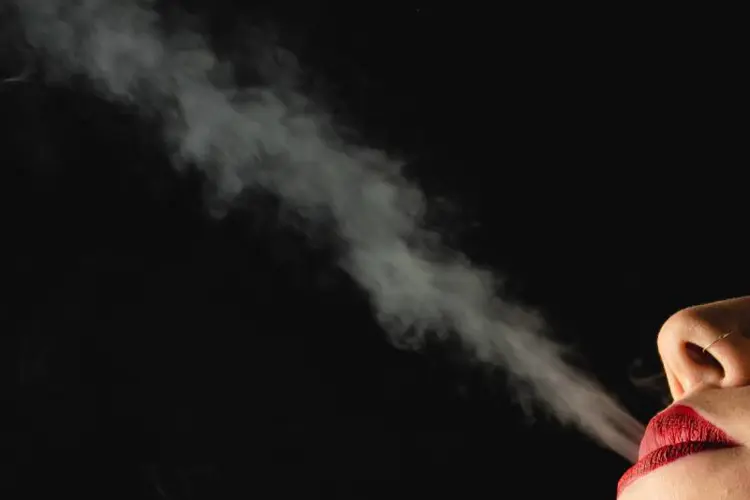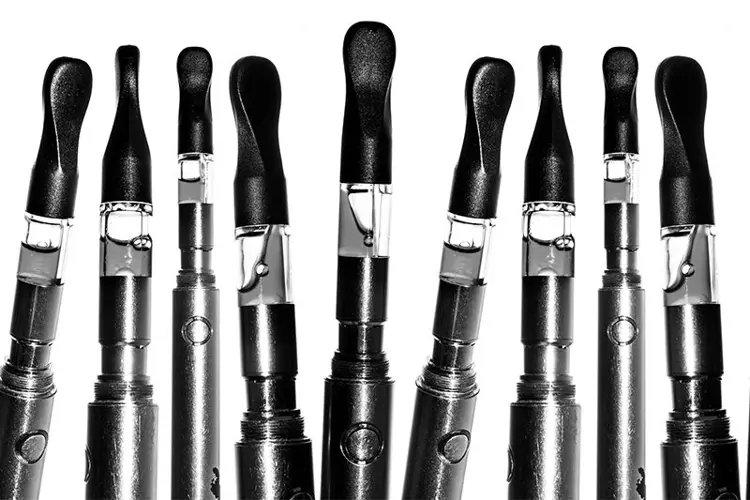Federal agencies issued statements Friday addressing the outbreak of “vaping-related” lung injuries, and one thing is clear: the FDA and CDC have every intention of continuing to misuse the terminology of vaping, causing further public confusion.
The agencies are finally acknowledging that the problems are primarily being caused by black market THC oil products, usually called vape carts. However, both agencies continue to use confusing descriptions that could scare many newer vapers (and cigarette smokers who may be considering vapes) away from products not implicated in the outbreak.
The plain truth is that there is no evidence that any commercial nicotine vaping product has caused any of the more than 200 possible cases.
“At this time,” said the statement from Acting FDA Commissioner Ned Sharpless, “there does not appear to be one product involved in all of the cases, although THC and cannabinoids use has been reported in many cases. At this time, the specific substances within the e-cigarette products that cause illness are not known and could involve a variety of substances.”
“All patients have reported using e-cigarette products,” echoed the CDC in its advisory. “The exact number is currently unknown, but many patients have reported using e-cigarettes containing cannabinoid products such as THC or CBD.”
Words mean things
Whatever the agencies say, the words they use cause problems of their own. The FDA statement contains 22 uses of the term “e-cigarette.” The official CDC health advisory used it 45 times.
Most people who call their favorite products “e-cigarettes” are vaping nicotine, not black market THC oil. The insistence by these public health agencies that the current outbreak of lung damage has been caused by e-cigarettes is likely to frighten vapers back to smoking, or prevent smokers from trying what is known to be a much safer product.
Additionally, many cannabis oil users would not even recognize that term as applying to the products they use, which are typically called oil cartridges, vape carts, THC carts, vape pens, weed vapes, or some variation on those phrases. None of those terms are used even once in Sharpless’ statement.
That could lead to cannabis vapers not considering that their products of choice might cause them harm. Nicotine, flavor-only, and cannabis vapers all use vaporization technology to consume their products. But the term “e-cigarette” is commonly understood to mean nicotine (or flavor-only) vapes, and not devices filled with either cannabis (THC or CBD) oils or flower.
The CDC includes an entire paragraph that is so full of misinformation about vaping (both kinds of vaping) that an uninformed reader will leave the page knowing fewer real facts than they began with:
“E-cigarettes can contain harmful or potentially harmful substances, including nicotine, heavy metals (e.g., lead), volatile organic compounds, and cancer-causing chemicals. Additionally, some e-cigarette products are used to deliver illicit substances; may be acquired from unknown or unauthorized (i.e., “street”) sources; and may be modified for uses that could increase their potential for harm to the user. For example, some e-cigarette pods or cartridges marketed for single use can be refilled with illicit or unknown substances. In addition, some e-cigarette products are used for “dripping” or “dabbing.” Dripping involves dropping e-cigarette liquid directly onto the hot coils of an e-cigarette which can result in high concentrations of compounds (e.g., tetrahydrocannabinol [THC] and cannabinoid compounds). Dabbing involves superheating substances such as “budder”, butane hash oil (BHO), and “710” that contain high concentrations of THC and other plant compounds (e.g., cannabidiol [CBD]).”
Whether vapes contain any of the bad things in the first sentence is irrelevant, because those aren’t the things causing the public health emergency the agency is supposed to be addressing. And no vaper drips anything onto hot coils. Heating the coils before soaking the cotton wick with liquid would set the cotton on fire. That’s a ridiculous idea left over from a bad paper by an uninformed researcher. Even if someone did drip cannabis oil (unlikely), it wouldn’t cause a change in the concentration of the compounds. Budder is a form of butane hash oil, and 710 is slang for any kind of cannabis oil.
The bottom line is that CDC officials—especially Brian King of the Office on Smoking and Health, who clearly wrote much of this—seem a lot less interested in finding the source of the current problem than they are in repeating their anti-vaping talking points for the mostly uninformed people who will be reading this document. The agency could pass on correct and useful information, but that wouldn’t serve their purpose, which is to cause further fear and uncertainty about vaping.
As if to prove the point, Health and Human Services Secretary Alex Azar chimed in with a statement about the outbreak in which he promised the Trump administration would “continue using every regulatory and enforcement power we have to stop the epidemic of youth e-cigarette use.”
New possible explanations from more reliable sources
No one knows for sure what’s causing the spate of lung injuries. It may be pesticides or fungicides, as suggested in our article earlier this week. It may also be that there is more than one thing causing the epidemic, with some patients poisoned by fungicides, for example, and others suffering from lipoid pneumonia caused by inhaling oils added to dilute raw cannabis extracts.
Meanwhile, an excellent Leafly article published today discusses new products used by THC oil manufacturers as diluents. “We don’t know what precipitated the current health crisis,” writes reporter David Downs. “But we do know people used illicit cannabis vape carts last year without ending up in the hospital. So it makes sense to ask: What’s changed recently in the street vape cart market?”
Downs describes a recently introduced “novel class of odorless, tasteless thickening agents” that is “one of the major new ingredients in illegal vape cart oil in widespread use this summer.” Many of the products are likely safe when used as intended—which is generally not for inhalation—but might be dangerous when used in oils meant for vape carts. In some cases, high heat could activate dangerous compounds.
Other diluents may be completely inappropriate and dangerous to use. One product, called Honey Cut, is made by a shadowy company whose website has no listed address or phone number.
Lab analysis showed that Honey Cut may contain a substance called tocopherol-acetate that is usually used to make skin creams. According to the NIH, says Downs, “inhaling tocopherol-acetate can cause wheezing, coughing, shortness of breath, and burning in the mouth, throat or chest, and could potentially lead to hospitalization.”
Better coverage and a useful health alert
Thursday, the day before the FDA and CDC weighed in on the lung damage epidemic, three major mainstream news outlets ran stories focused on the possibility that black market cannabis oil is the likely vector, rather than e-cigs.
“Federal health officials are under fire for their unclear public warnings after one death and nearly 200 cases of vaping-related lung illnesses, which some say are related to the far riskier practice of vaping marijuana oil rather than nicotine,” said the USA Today story, almost certainly the best thus far in a major newspaper. The article also quoted Boston University expert Michael Siegel and Ray Niaura from New York University.
Both NBC Newsand the Washington Post gathered their own estimates of the number of likely cases (NBC says 298, the Post estimates 354), by contacting state health authorities directly. Bypassing the CDC is a good sign. Usually these news organizations accept the word of federal health agencies on vaping-related issues as gospel.
Last week, unable to wait for the CDC to issue an alert of its own, the California chapter of NORML, the marijuana advocacy organization issued its own warning to cannabis users:
“Cal NORML strongly advises consumers to avoid unlicensed vape products by shopping only from licensed retailers. Any product bought from a state-licensed store or delivery service will have been tested for safety. Unfortunately, there are a lot of bogus, unlicensed products floating around on the illegal market. Some even come in professional packaging, which is easily obtained from online suppliers. For example, various different illicit products are reportedly sold under the unlicensed, generic brand name “Dank Vapes” (though it’s unclear whether they were the source of the lung disease outbreak).
“Consumers should be aware that products on the underground market may come in professional-looking counterfeit packages, but no such products are sold in licensed dispensaries or delivery services.”
The Freemax REXA PRO and REXA SMART are highly advanced pod vapes, offering seemingly endless features, beautiful touchscreens, and new DUOMAX pods.
The OXVA XLIM Pro 2 DNA is powered by a custom-made Evolv DNA chipset, offering a Replay function and dry hit protection. Read our review to find out more.
The SKE Bar is a 2 mL replaceable pod vape with a 500 mAh battery, a 1.2-ohm mesh coil, and 35 flavors to choose from in 2% nicotine.
Because of declining cigarette sales, state governments in the U.S. and countries around the world are looking to vapor products as a new source of tax revenue.
The legal age to buy e-cigarettes and other vaping products varies around the world. The United States recently changed the legal minimum sales age to 21.
A list of vaping product flavor bans and online sales bans in the United States, and sales and possession bans in other countries.


















